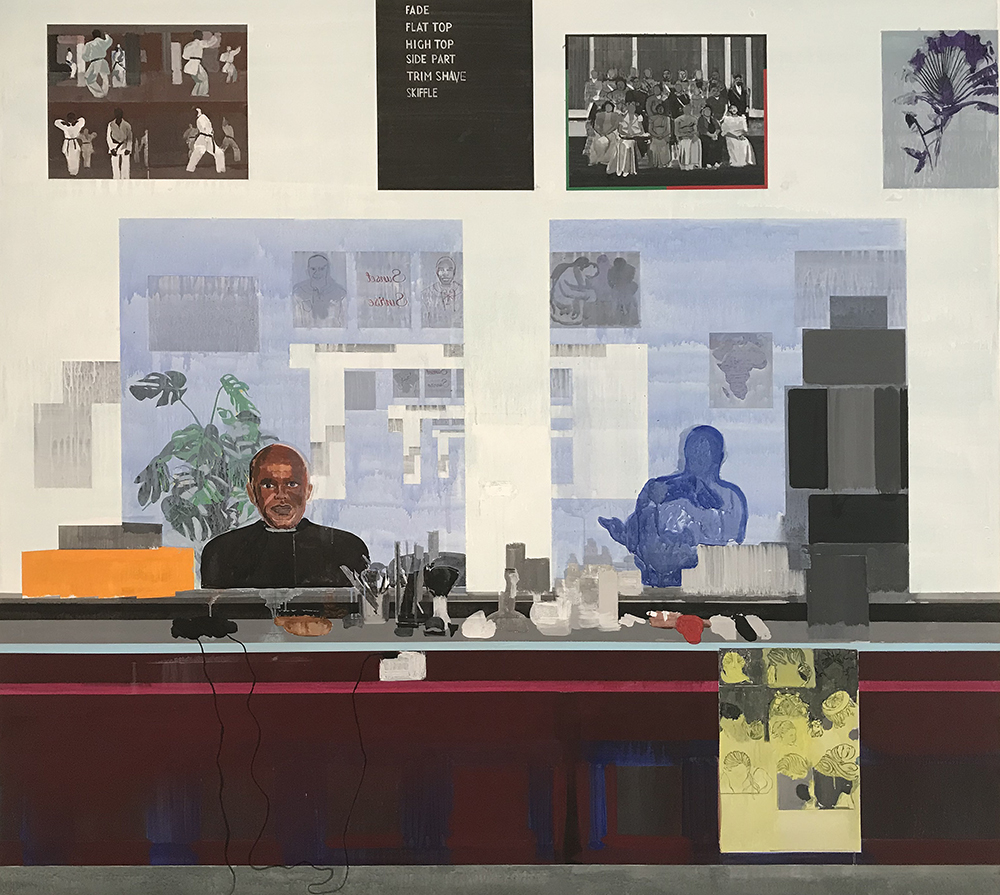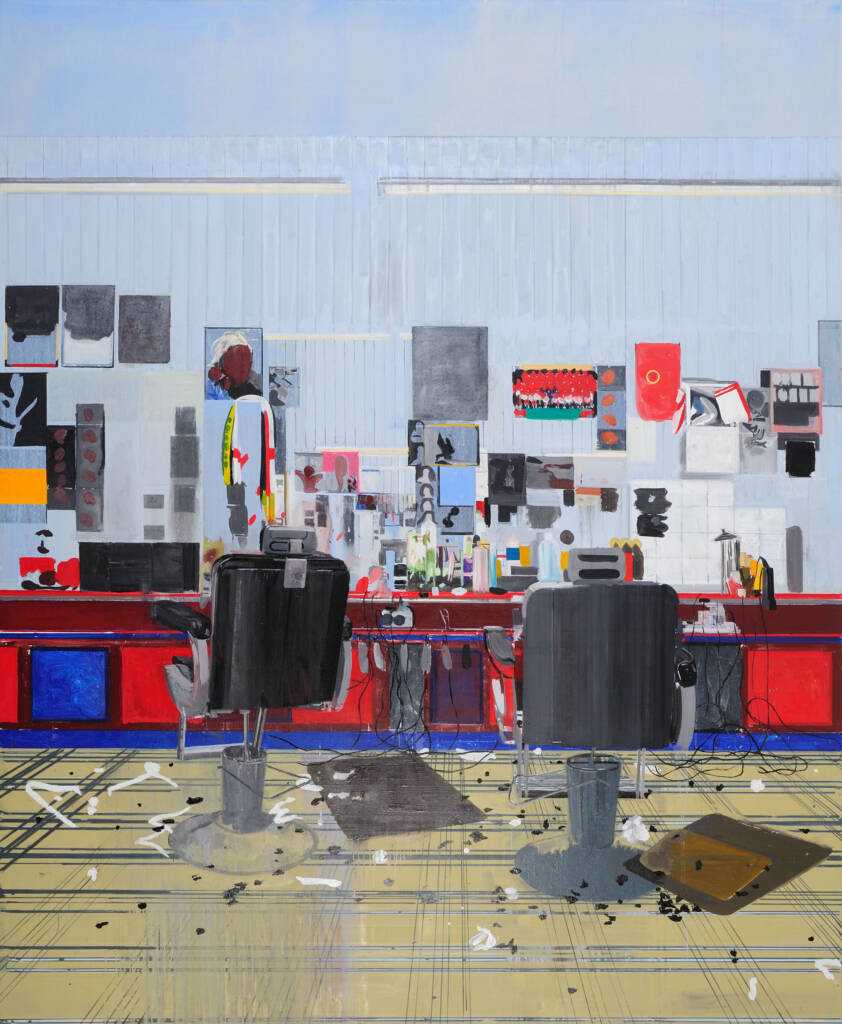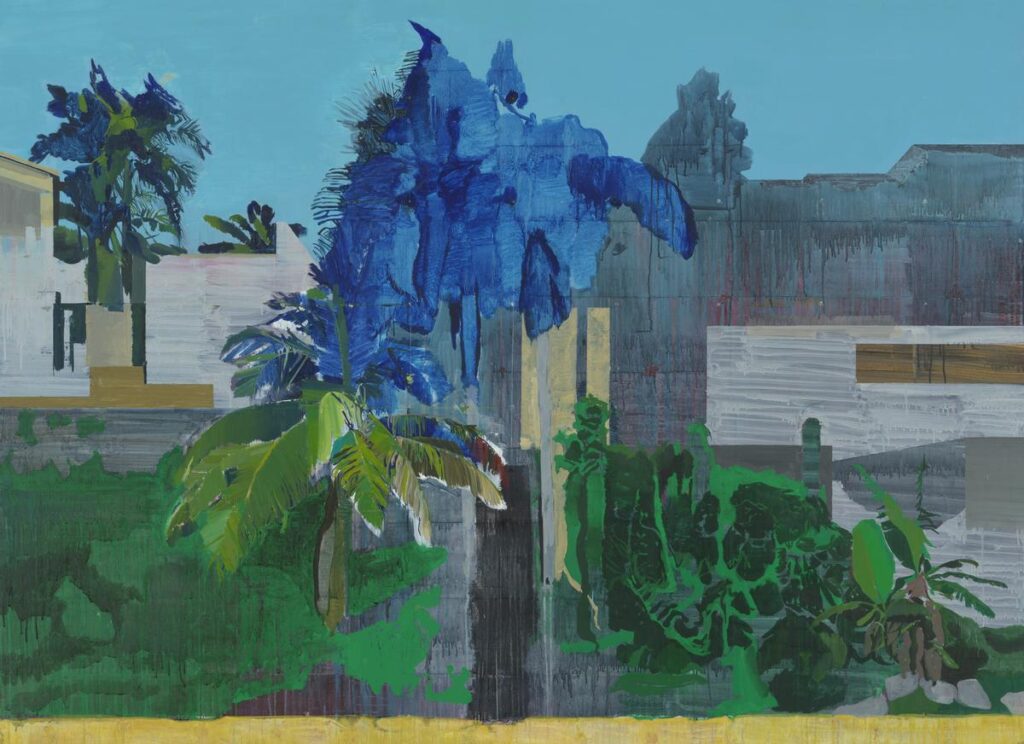
Hurvin Anderson was born in 1965 in Handsworth, Birmingham, to Jamaican parents who had been part of the Windrush generation. His paintings touch upon both his Jamaican heritage and his experiences of growing up in black British communities. At the same time, he references wider European art history and artistic styles, to create a unique sense of place and identity. He pays homage to his cultural and political forebears, while also contributing to discussions about the legacy of painting.
Anderson first painted a Birmingham barbershop in 2006. Over the intervening years he has repeatedly reworked the same barbershop in a multitude of ways to explore key painting styles, shifting from figuration to abstraction and experimenting with the classic genres of still life, landscape and portraiture.
The Salon Paintings exhibition (a deliberately ambiguous title referencing both 19th Century French academic painting and hairdressers), which showed at the Hepworth Wakefield gallery in 2023, focused on the Barbershop series as a lens through which to understand concerns of memory, identity and nationhood.

Explaining the fascination of the mirrored interior of the Birmingham barbershop shown in Skiffle 2023, he compares it to Edouard Manet’s ‘Bar at the Folies-Bergère’: the barbershop as the Caribbean equivalent of the Parisian impressionist café. Like Manet, he uses the large wall mirror to reflect the interior of the room which seems to enfold the viewer into the image.
Anderson’s Barbershop series also takes its cue from collage, both actual and painted, as used by two of his big artistic influences; Richard Hamilton and Patrick Caulfield. These works move between figuration and abstraction in which the mostly empty chairs and counter exist in real space while the photos of sporting and political heroes on the walls, reflected in the glass, recede into infinity. The miniature skylines of bottles and jars (or a queue of customers?) on the counter are reminiscent of still lifes by Morandi. A part of him wants to draw you in with authentic detail, inviting you to put on the cape, sit in the chair and choose your hairstyle from the menu on the wall.
I am struck by the limited red/blue/grey colour palette of his painting Afrosheen of 2009 and its preoccupation with abstract compositional ideas dominated by a welter of floating rectilinear shapes. The sense of abstraction is heightened by the absence of staff and customers and the way that the mirrored wall itself resembles a painting/drawing-filled gallery wall.

In 2017, Anderson became fascinated with abandoned, partly-built beach-front holiday hotels encountered on family trips back to Jamaica. These concrete structures were being overgrown and reclaimed by nature whilst new hotels were being built nearby. This environmental waste and degradation concerned him and he explored this new theme through works such as Hawksbill Bay of 2020. This new series exposes the dangers of projecting false images of tropical tourist paradises which in reality often generate environmental, economic and social problems. As in his barbershop paintings the absence of people within these ruined landscapes allows us to see them in abstract terms. The two series share a feeling of abandonment and foreboding.
You can see more of Anderson’s work on the website of Thomas Dane gallery, and the work of two other fascinating artists who deal with similar subjects; Ayo Akingbade and Billie Zangewa, whose work was on show at John Hansard gallery in Southampton.